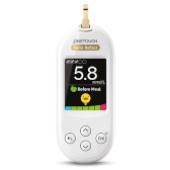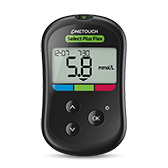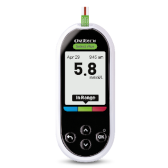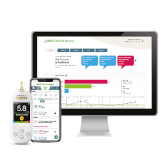What is diabetes?

Diabetes is a chronic (long‐lasting) condition that occurs when the body cannot produce enough insulin or cannot use insulin. Insulin is a hormone produced in the pancreas that is needed to move glucose (sugar) from the blood into the body’s cells, where it is used for energy. When insulin is missing or not working properly, glucose levels in the blood rise. Diabetes is diagnosed with blood tests showing high levels of glucose in the blood.
Over time, the high blood glucose levels (known as hyperglycemia) can cause damage to many tissues in the body and lead to disabling and life‐threatening health complications.
Type 1 diabetes
In type 1 diabetes, the body’s immune system attacks the insulin‐producing cells in the pancreas. As a result, the body can no longer produce any useful insulin. Why this occurs is not fully known or understood. The disease can affect people of any age, but it usually occurs in children or young adults.
People with this form of diabetes need insulin every day to control the levels of glucose in their blood. Without insulin, a person with type 1 diabetes can quickly develop a life-threatening condition known as diabetic ketoacidosis and may not survive if not treated quickly and properly. But with daily insulin treatment, regular blood glucose monitoring, healthy eating and maintaining healthy lifestyles, people with type 1 diabetes can lead normal, healthy lives.
Type 2 diabetes
Type 2 diabetes is the most common type of diabetes. It usually occurs in adults but is being seen more in children and adolescents. In type 2 diabetes, the body can produce insulin but becomes resistant to the insulin so that the insulin no longer works properly. Over time, insulin levels may become too low to be effective. Both insulin resistance and low insulin levels lead to high blood glucose levels in type 2 diabetes.
Unlike people with type 1 diabetes, people with type 2 diabetes may not require daily insulin treatment to survive. The essential treatment for type 2 diabetes includes adopting a healthy eating plan, increasing physical activity, managing body weight and taking diabetes medicines if needed. Several pills or tablets as well as injectable therapies including insulin are available when needed to help control blood glucose levels for people with type 2 diabetes.
Prediabetes
Sometimes, blood glucose levels are higher than normal but not high enough to meet the level for a diabetes diagnoses. This is called prediabetes and it puts the person at a greater risk for developing type 2 diabetes and heart disease.1
If you have been told you are at risk for diabetes or have prediabetes, know that you can do something to help prevent or delay type 2 diabetes. Making some lifestyle changes now can help you avoid or delay the onset of type 2 diabetes and other health complications such as heart disease, down the road. It’s never too late to start.
Once you’ve been told by your doctor that you have prediabetes, be sure to get tested for diabetes every year.1 And follow the recommended guidelines to help prevent type 2 diabetes. These include losing weight if needed, exercising, and eating healthy.
Gestational diabetes
Gestational diabetes is a type of diabetes or high blood glucose that is first detected usually during the second or third trimester of pregnancy that isn’t pre‐existing type 1 or type 2 diabetes. If you’ve been told you have gestational diabetes, you are not alone. The International Diabetes Federation (IDF) estimated in 2017 that 1 in 7 births worldwide was affected by gestational diabetes.2
Monitoring blood glucose levels and carefully following your doctor’s care plan will help keep you and your baby safe from complications related to gestational diabetes. The good news is that gestational diabetes tends to go away when the pregnancy ends. However, once you've had gestational diabetes, you have a higher chance of getting it again during a future pregnancy. You also have a higher chance of developing type 2 diabetes later in life.
Source:
1 American Diabetes Association. (ADA) Standards of Medical Care in Diabetes–2018. Diabetes Care 2018; 41, Suppl. 1. Online version accessed Sept 9, 2019
2 International Diabetes federation. (IDF) IDF ‐ Gestational Diabetes. Accessed online Sept 9, 2019
IDF Diabetes Atlas (8th Ed.) (2017). International Diabetes Federation: Brussels, Belgium. Online version accessed Sept 9, 2019
Related articles
US-VRF-1900008 (21-120)

















